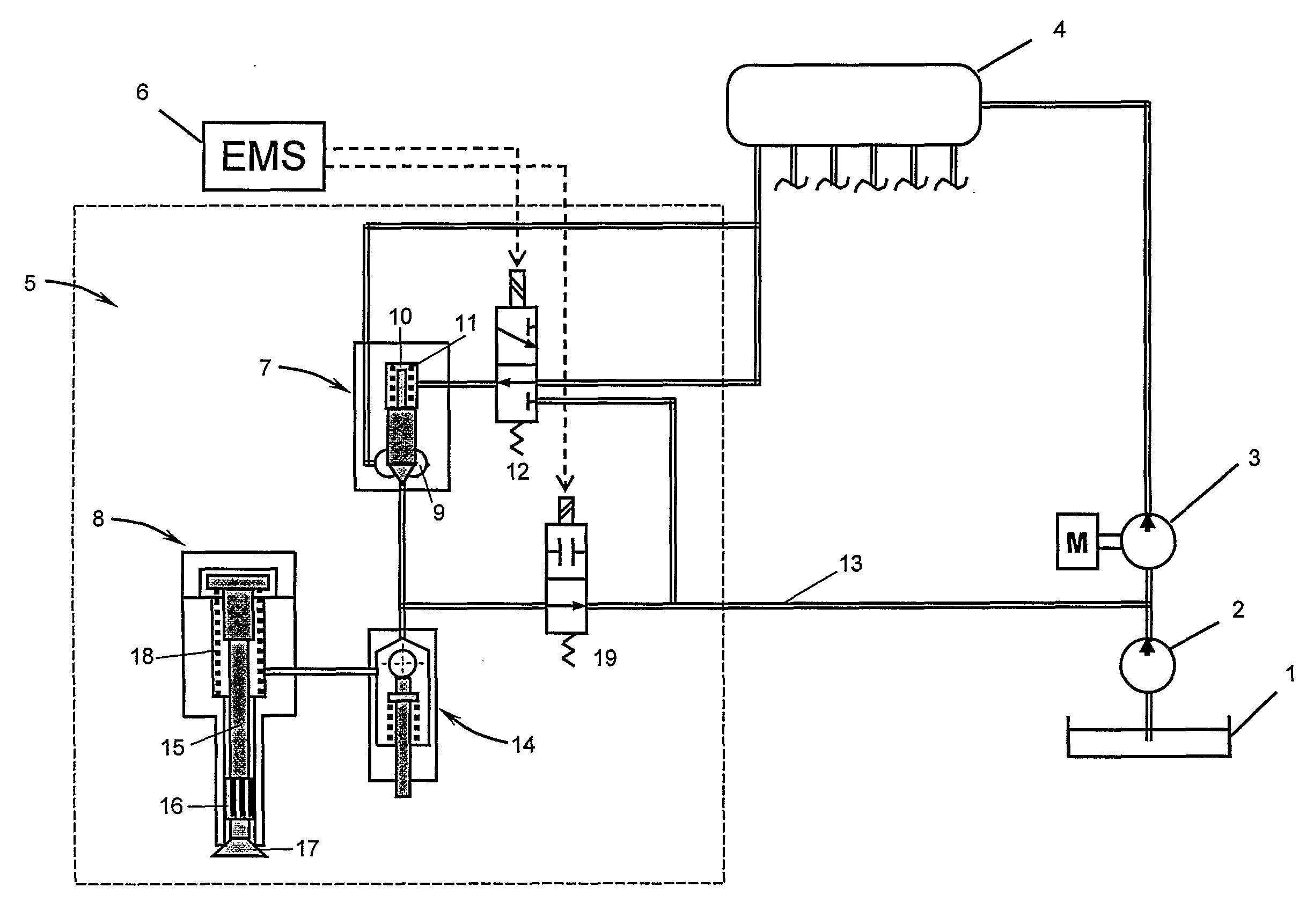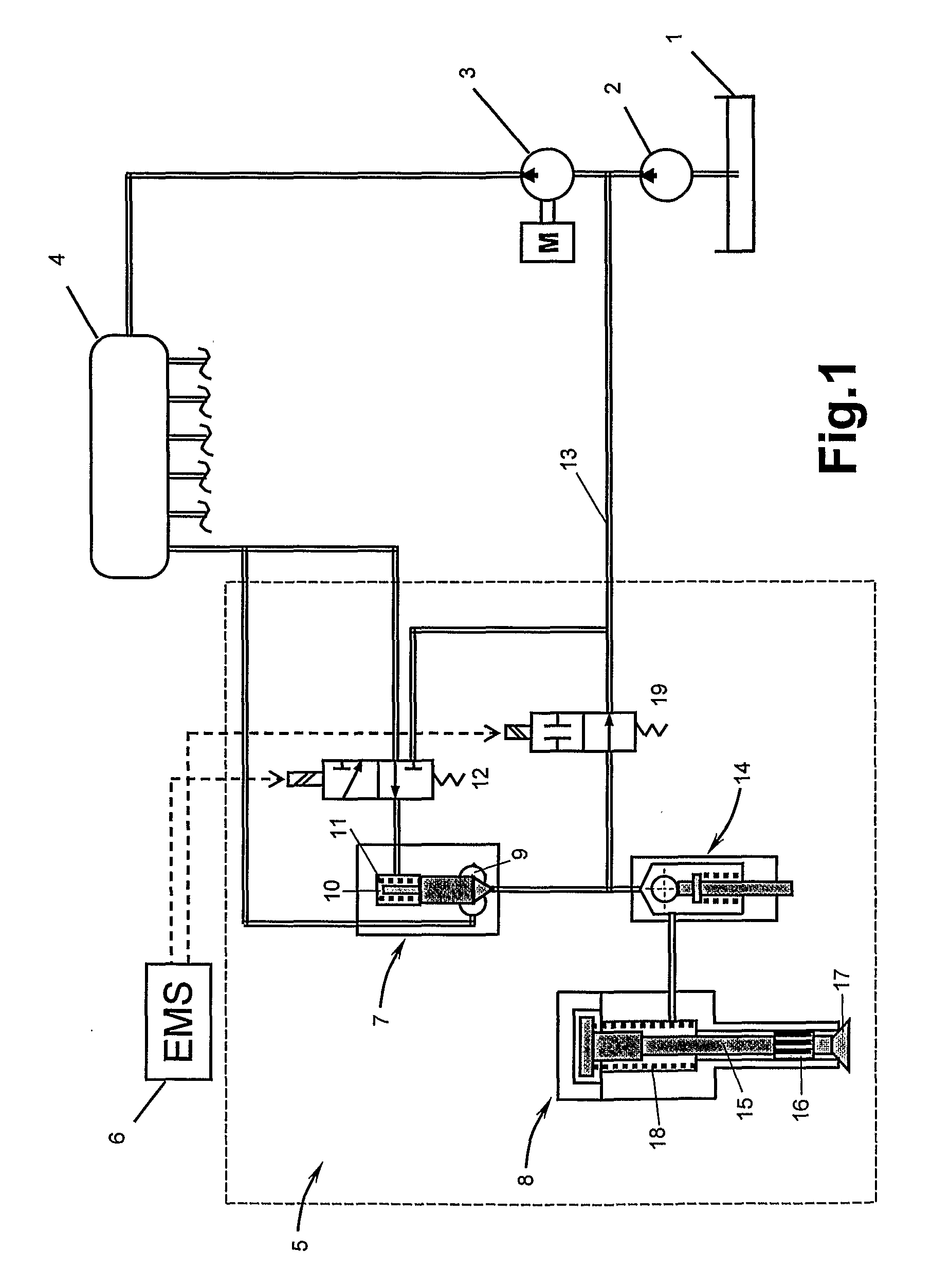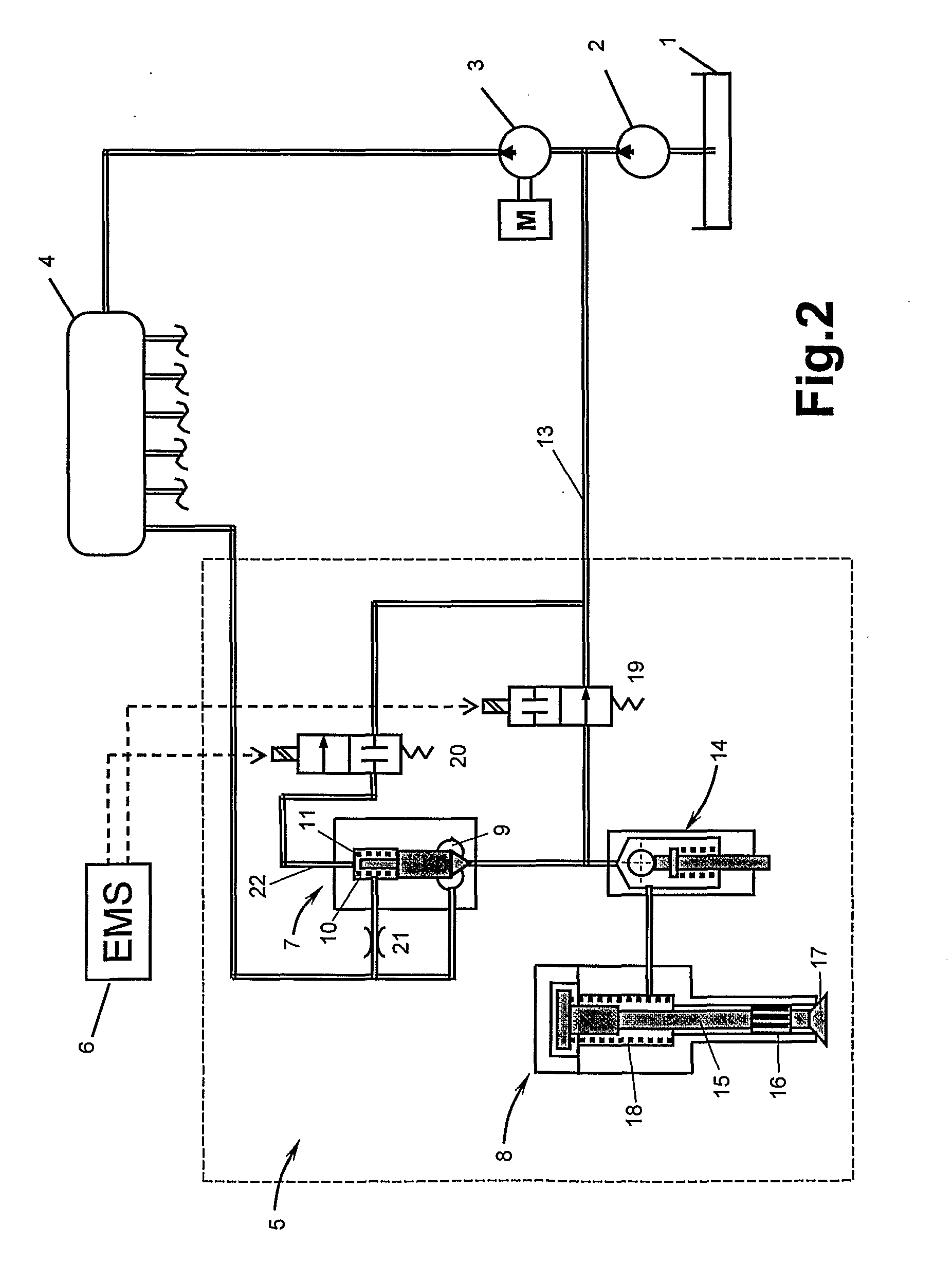Fuel Injection System Suitable for Low-Viscosity Fuels
a fuel injection system and low viscosity technology, applied in the direction of fuel injecting pumps, process and machine control, instruments, etc., can solve the problems of reducing the clearance in the spool, affecting hydraulic efficiency and controllability, and the volume to be passed through the injector and control valve to obtain a given engine power, etc., to achieve the effect of long stem sealing length, small leakage, and relatively large li
- Summary
- Abstract
- Description
- Claims
- Application Information
AI Technical Summary
Benefits of technology
Problems solved by technology
Method used
Image
Examples
Embodiment Construction
[0021]Referring to FIG. 1, there is provided a low-viscosity fuel feed system including a fuel tank 1, a feed pump 2 and associated components (not shown), a high-pressure pump 3, a common rail 4, to which a plurality of injectors 5 are connected, and an engine management system 6. A hydraulically operated valve 7 is connected between the common rail 4 and the inlet of a nozzle 8, the inlet of the hydraulically operated valve 7 being connected to the common rail 4. The hydraulically operated valve preferably has a precision-matched stem and forms an outlet chamber 9 and a control chamber 10, and is preferably biased towards its closed position by a resilient means 11. The control chamber 10 of the valve 7 can be connected by a three-way pilot valve 12 to either the common rail 4 or a return line 13, depending on commands from the Engine Management System (EMS) 6. The outlet of the hydraulically operated valve 7 is connected to the inlet of the nozzle 8 via a differential hydraulic v...
PUM
 Login to View More
Login to View More Abstract
Description
Claims
Application Information
 Login to View More
Login to View More - R&D
- Intellectual Property
- Life Sciences
- Materials
- Tech Scout
- Unparalleled Data Quality
- Higher Quality Content
- 60% Fewer Hallucinations
Browse by: Latest US Patents, China's latest patents, Technical Efficacy Thesaurus, Application Domain, Technology Topic, Popular Technical Reports.
© 2025 PatSnap. All rights reserved.Legal|Privacy policy|Modern Slavery Act Transparency Statement|Sitemap|About US| Contact US: help@patsnap.com



